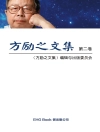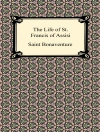The Craft of Narrative
If memory valorizes ones life, it humbles us as well. As the saying goes, Life is what happens while we are making other plans. In retrospect, those choices and consequent events may cause delight as well as remorse or delay in realizing dreams that are replaced by unexpected events but also give us the time necessary to achieve some ambitions and perhaps allow insight into lifes patterns. Writing a memoir combines fictional monologue and essay. Both genres are intimate first-person addresses to a reader, preferable to use Roland Barthess terminology from his book S/Z, a writerly reader.
The selection of the title for these three disparate memoirs is taken from a term used in painting: the showing through of a past image overlain by a more recent one. Lillian Hellman used this term for her memoir and the subsequent film, Pentimento. I am a writer and a teacher of literary fiction, including Homers Odyssey, James Joyces Ulysses, and Virginia Woolfs various novels, in particular Mrs. Dalloway and To the Lighthouse, in which written memory, the superimposition of current feelings and observations onto past events results in an ordering of what may otherwise be forgotten or fragmented or considered as irrelevant and disconnected events. Virginia Woolf reminded her teenage nephew and later biographer Clive Bell to remember that nothing has happened until it has been recounted.
Recollectionthe ordering of remembered events, feelings, and their consequences, external and internalgives us order through crafted narrative. Homer set the stage for this recognition when he begins the journey of his long epic with an address to the Muse, saying, Begin whereer thou wilt to retell the tale for our time too. And so we begin a crafted set of memories, beginning in medias res, the middle of things, rather than accounting for every event in an uncrafted chronological order. Retelling produces awareness of patterns of cause and effect. Flashbacks can reveal apparent prophecies too.
This awareness, thanks to years of teaching and discussing literary works of art, has prompted me to present these brief memoirs from three apparently distinct stages of my life. Only connect! as E. M. Forster advised is worthy of remembering, if difficult to apply.
عن المؤلف
Alison Armstrongs publications include three books: The Joyce of Cooking (Station Hill Press, 1986), The Hernes Egg by W.B. Yeats, The Manuscript Materials (Cornell University Press, 1993), and Gazelle: 9 Monologues (Xlibris, 2017), as well as essays, short fiction, poetry, and reviews in American Arts Quarterly, BOMB, Exquisite Corpse, Notre Dame Review, and PN Review, among others. She is contributing editor to Irish Literary Supplement (since 1984) and James Joyce Broadsheet (since 1980).
After earning an M.A. in English at Ohio State University and travel and research in Ireland and England in the 1970s where she earned an M.Litt. at Oxford, she returned to the U.S. as an interim editor at The Kenyon Review in 1981 before settling in Manhattan where she completed a Ph.D. in Comparative Literature at NYU and taught at The Cooper Union, The New School, and (since 2003) The School of Visual Arts. She lives in Greenwich Village near the Hudson River.












